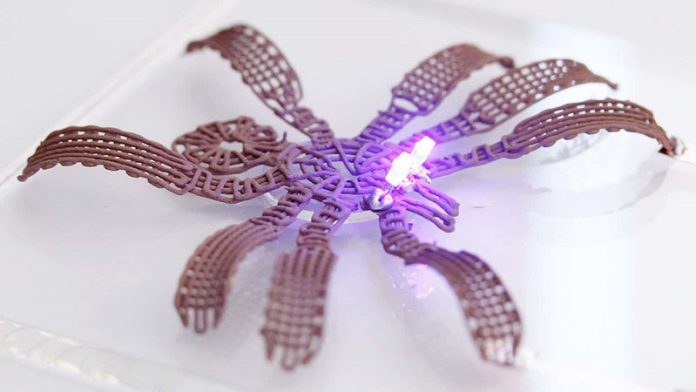
A group of smart scientists has found a cool way to make 3D printing even more interesting.
They developed a metallic gel that can be used to print solid 3D objects right at room temperature.
It’s pretty amazing because until now, no technology could print 3D metal objects at room temperature in one go.
Michael Dickey, one of the scientists from North Carolina State University, is super excited about this.
He says this breakthrough could be useful for making a bunch of electronic components and devices.
So, how did they create this metallic gel? The researchers started with a mix of tiny copper particles in water.
Then, they added a small amount of a metal blend that stays liquid at room temperature. The next step was to stir the mix well.
As they stirred, the liquid metal and copper particles stuck together, creating a metal network in the water solution.
Dickey pointed out that the gel-like texture is important as it allows the copper particles to be evenly distributed, which helps to form pathways for electricity and also prevents the copper particles from sinking and clogging the printer.
Once it’s printed, the gel holds its shape. If left to dry at room temperature, it becomes even harder while keeping its shape. But there’s more! If you apply heat to the printed object while it dries, interesting things can happen.
The researchers found that the way the particles align affects how the object dries. Let’s say you print a cylinder. The sides would shrink more than the top and bottom as it dries. If you dry it slowly at room temperature, the object’s shape stays the same.
But, if you quickly dry it with heat – like under a lamp at 80 degrees Celsius – it can change shape. Because this change is predictable, you can control the final shape of the object with heat.
Dickey refers to this as four-dimensional printing – three dimensions for shape and one for time. But the most exciting part is that the printed objects are highly conductive, as they end up being almost entirely made of metal.
While not as conductive as regular copper wire, it’s way more conductive than anything else that can be printed.
The researchers are excited about this new tech and are eager to work with industry partners to see where it can be applied. They also welcome potential collaborators for future research.
The details of their work have been published in a paper titled “Metallic Gels for Conductive 3D and 4D Printing” in the journal Matter.
Their research was supported by the National Natural Science Foundation of China and the China Scholarship Council.
Follow us on Twitter for more articles about this topic.



